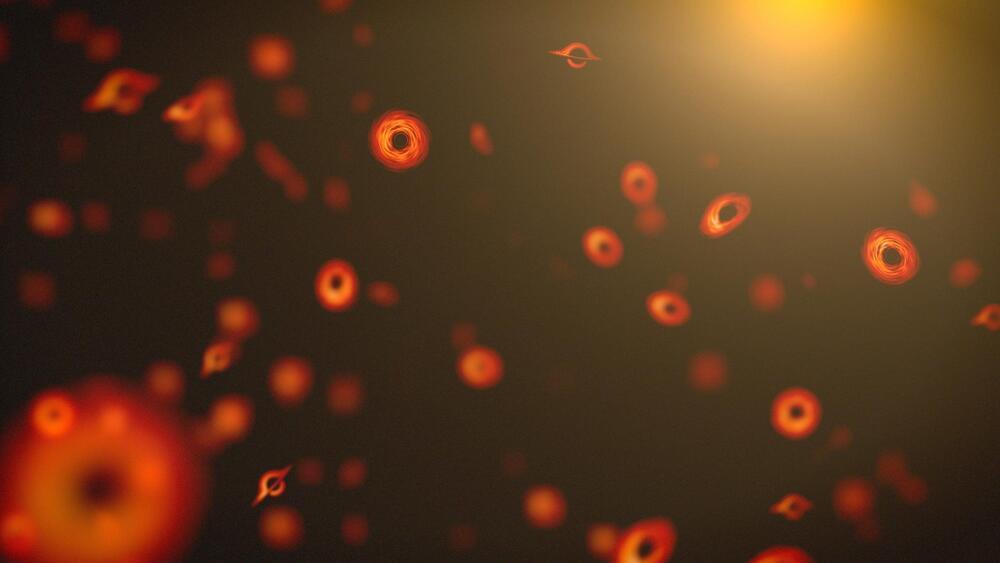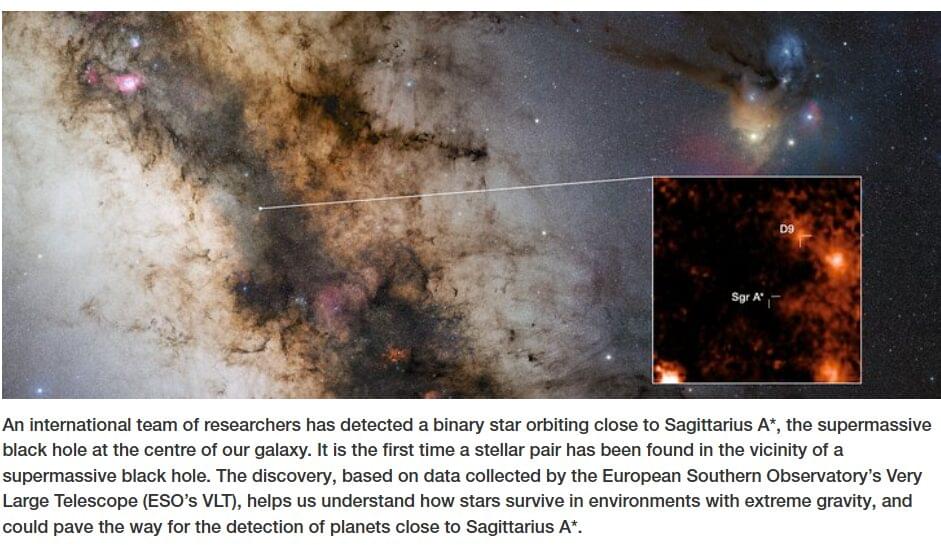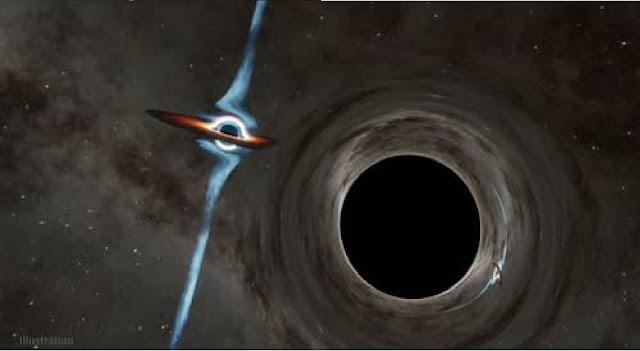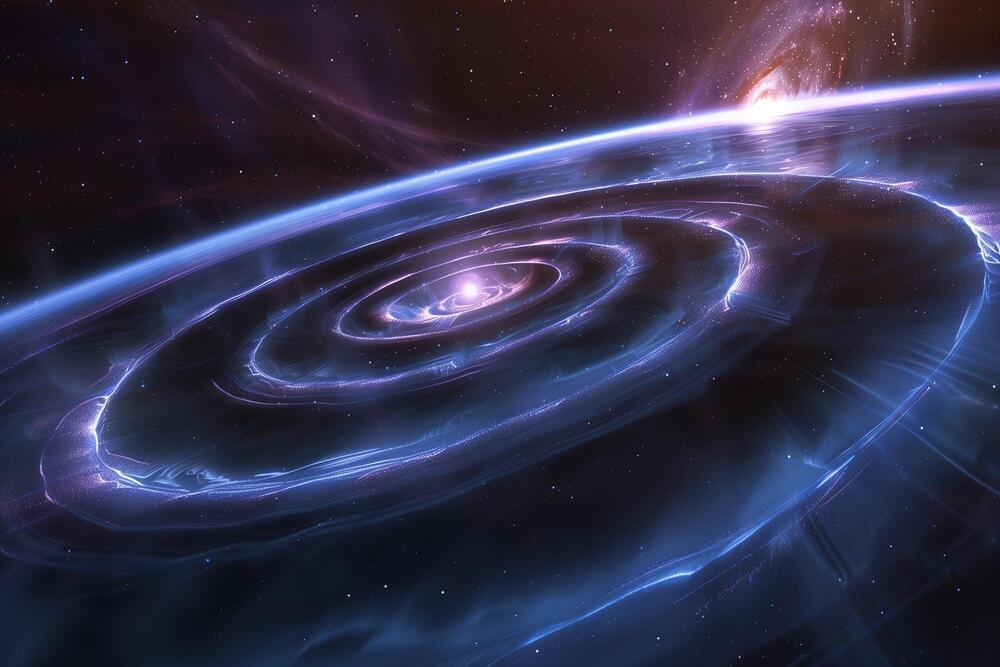Scientists estimate there are 200 million black holes scattered across the Milky Way galaxy!
Category: cosmology – Page 71

Dark Matter’s Secret Hideouts: Are Primordial Black Holes Lurking Nearby?
Primordial black holes could reshape our understanding of dark matter. Researchers suggest these elusive cosmic phenomena might be hiding within hollow asteroids or planetoids, detectable through straightforward, cost-effective methods.
Are Primordial Black Holes real? These elusive objects are thought to have formed during the chaotic early moments of the Universe, shortly after the Big Bang
The Big Bang is the leading cosmological model explaining how the universe as we know it began approximately 13.8 billion years ago.
Strange Flashes Could Be Signs of Closest Object Seen Near a Black Hole
Some 275 million light-years from the Milky Way lies a true cosmic mystery.
There, in the heart of a galaxy named 1ES 1927+654, squats a supermassive black hole whose monkeyshines and hijinks have baffled astronomers for years.
Now, we might finally have an explanation for at least some of its wild misbehavior: an orbiting white dwarf star veering precariously close to the brink of the black hole’s event horizon, the point beyond which no matter can ever return.
A Team Of Physicists Says There May Be Another Universe Running Backward In Time Prior To The Big Bang
What lies beyond the beginning of time? Physicists are exploring groundbreaking ideas that could reveal a hidden universe behind the Big Bang.
This mind-bending theory challenges everything we know about existence and the mysteries of our cosmic origins.
Imagine rewinding the story of our universe —back through billions of years of expansion, past the formation of galaxies, stars, and planets, to the very beginning. What if, instead of a single moment of creation, there was a cosmic reflection—a mirror image of everything we know, moving backward in time?
This is the tantalizing idea proposed by a group of physicists, suggesting that before the Big Bang, another universe may have existed, running in reverse. In this mirrored cosmos, time flows backward, and the very nature of existence challenges the boundaries of our understanding. Could this alternate reality hold the answers to some of the greatest mysteries in science, like the elusive nature of dark matter or the imbalance between matter and antimatter?
As groundbreaking as it sounds, this theory doesn’t just shake up the foundations of modern physics—it opens the door to deeper philosophical questions. What if the universe isn’t a singular event but part of a grander, cyclical dance? What if time, as we perceive it, is merely one piece of a much larger puzzle?
LIGO Fails to Find Continuous Gravitational Waves From Pulsars
In February 2016, scientists working for the Laser Interferometer Gravitational-Wave Observatory (LIGO) made history by announcing the first-ever detection of gravitational waves (GW). These waves, predicted by Einstein’s Theory of General Relativity, are created when massive objects collide (neutron stars or black holes), causing ripples in spacetime that can be detected millions or billions of light years away. Since their discovery, astrophysicists have been finding applications for GW astronomy, which include probing the interiors of neutron stars.
For instance, scientists believe that probing the continuous gravitational wave (CW) emissions from neutron stars will reveal data on their internal structure and equation of state and can provide tests of General Relativity. In a recent study, members of the LIGO-Virgo-KAGRA (LVK) Collaboration conducted a search for CWs from 45 known pulsars. While their results showed no signs of CWs emanating from their sample of pulsars, their work does establish upper and lower limits on the signal amplitude, potentially aiding future searches.
The LVK Collaboration is an international consortium of scientists from hundreds of universities and institutes worldwide. This collaboration combines data from the Laser Interferometer Gravitational-Wave Observatory’s (LIGO) twin observatories, the Virgo Observatory, and the Kamioka Gravitational Wave Detector (KAGRA). The preprint of the paper, “Search for continuous gravitational waves from known pulsars in the first part of the fourth LIGO-Virgo-KAGRA observing run,” recently appeared online.

Black Hole Plasma Jets Seen Traveling at Record Speeds Leave Astronomers Stunned
A supermassive black hole in a distant galaxy is rewriting the rules of astrophysics, with unprecedented activity that has left astronomers around the world both fascinated and perplexed. Plasma jets traveling at record-breaking speeds and rapid X-ray fluctuations near the event horizon are just some of the strange phenomena observed in real time. What secrets is this cosmic behemoth revealing, and how might it reshape our understanding of black holes?


First-ever Binary Star Found Near our Galaxy’s Supermassive Black Hole
An international team of researchers has detected a binary star orbiting close to Sagittarius A*, the supermassive black hole at the center of our galaxy. It is the first time a stellar pair has been found in the vicinity of a supermassive black hole.
The discovery, based on data collected by the European Southern Observatory’s Very Large Telescope (ESO’s VLT), helps us understand how stars survive in environments with extreme gravity, and could pave the way for the detection of planets close to Sagittarius A*.
“Black holes are not as destructive as we thought,” says Florian Peißker, a researcher at the University of Cologne, Germany, and lead author of the study published in Nature Communications.

Cosmic Titans on a Collision Course: Two Monster Black Holes Poised to Shake Space-Time Itself
Astronomers have identified two supermassive black holes, collectively known as PKS 2131-021, that are on the brink of a catastrophic collision. Located about 9 billion light-years from Earth, these black holes have been spiraling toward each other for 100 million years and now orbit one another every two years. The discovery, published in The Astrophysical Journal Letters, reveals a fascinating binary system that could help scientists understand how black holes form and merge.
PKS 2131-021 is a type of black hole known as a blazar, characterized by jets of supercharged plasma directed at Earth. These jets, which originate from the hot gas swirling around the black hole, travel at nearly the speed of light. When researchers observed the brightness of about 1,800 blazars across the universe, PKS 2131-021 stood out due to its regular fluctuations, akin to the ticking of a clock. This periodic dimming and brightening is believed to result from the gravitational influence of a second black hole in orbit.
To confirm this, scientists analyzed 45 years of data from five observatories. The findings matched predictions, confirming that the brightness variations were caused by a binary black hole system.

Galactic Gravity’s Secret Role in Black Hole Collisions
Galactic gravity can dramatically impact wide binary stars, pushing them towards unexpected mergers or collisions.
The detection of gravitational waves.
Gravitational waves are distortions or ripples in the fabric of space and time. They were first detected in 2015 by the Advanced LIGO detectors and are produced by catastrophic events such as colliding black holes, supernovae, or merging neutron stars.